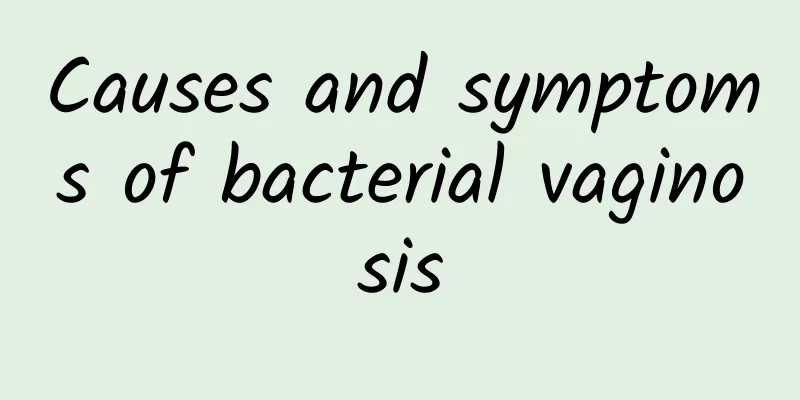What are the common symptoms of uterine fibroids?

|
Typical symptoms of uterine fibroids include abnormal menstruation, abdominal mass, pelvic pain, infertility, etc., but the severity of the disease varies from person to person, and some patients may have no obvious symptoms. If you have abnormal menstruation or suspect fibroids, you should seek medical attention in time to avoid delaying treatment. 1. Abnormal menstruation The most common manifestations are heavy menstruation, prolonged menstruation or irregular menstruation. This is usually related to the compression of the endometrium by the fibroids or the expansion of the uterine cavity. Repeated heavy bleeding may lead to anemia, manifested as dizziness, fatigue, palpitations, etc. It is recommended that women with the above conditions go to the hospital for a B-ultrasound examination in time for diagnosis. If uterine fibroids are diagnosed, treatment methods such as oral contraceptives, sodium dithiocarbamate injection for hemostasis or surgical resection can be selected according to the amount of bleeding. 2. Abdominal mass As the size of the fibroid increases, the patient may be able to feel a lump in the abdomen, or even feel a distended abdomen. This is especially true for subserosal fibroids and larger fibroids. If you feel a lump, you should seek medical attention immediately. Imaging tests such as color Doppler ultrasound or CT scans can be performed to assess the size, location, and nature of the fibroid, and surgical removal can be performed if necessary. 3. Pelvic compression or pain Large fibroids may compress surrounding organs, such as the bladder and rectum, leading to frequent urination, constipation, lower abdominal pain or lumbar pain. To relieve pelvic compression symptoms, it is recommended to use hot compresses, analgesics, or surgically remove the fibroids to completely solve the problem. 4. Infertility or miscarriage Uterine fibroids may also affect fertility, especially submucosal fibroids located in the uterine cavity or near the endometrium, which can easily lead to difficulty in implantation of the fertilized egg or cause early miscarriage. If infertility or repeated miscarriages occur, it is necessary to determine whether surgical treatment is needed under the guidance of a doctor. Hysteroscopic resection or transabdominal surgery can be selected to improve pregnancy conditions. 5. Other symptoms A small number of people may experience stress urinary incontinence or lower limb edema, which is related to the location and compression of the fibroids. If the symptoms are obvious, it is recommended to develop a plan based on the condition, such as using medication to control symptoms or interventional treatment such as uterine artery embolization to reduce the size of the fibroids and relieve compression symptoms. Uterine fibroids can present different symptoms depending on their size and location. If you find any abnormal symptoms, you should seek medical attention immediately. Through examination, you can understand the nature and severity of the fibroids, and a professional doctor will develop a suitable treatment plan to avoid worsening of the disease and affecting your health and quality of life. |
<<: What is the difference between uterine fibroids and adenomyosis?
>>: Does interventional embolization for adenomyosis require urinary catheterization?
Recommend
What causes recurrent pelvic peritonitis?
Chronic pelvic peritonitis is usually caused by i...
What to do if there is residue in the cervical canal after spontaneous abortion
If there is any residue in the cervical canal aft...
Elderly people can’t lose weight? Eat high-fiber and low-calorie cucumber stuffed with meat
Some elderly people usually don’t dare to eat too...
How to treat acute cervicitis? 3 dietary therapies can treat acute cervicitis
Acute diseases generally need to be treated well....
What symptoms of uterine fibroids will appear in life
Among the many gynecological diseases, uterine fi...
How to treat moderate to severe cervical erosion in women? Three major treatments for moderate to severe cervical erosion
When cervical erosion reaches moderate or severe ...
What are the symptoms of chocolate ovarian cysts and what to do if they rupture
What are the symptoms of a chocolate ovarian cyst...
What are the causes of dysmenorrhea?
Many female friends have experienced dysmenorrhea...
What are the early symptoms of pelvic peritonitis?
Sometimes some physiological abnormalities may be...
What are the specific symptoms of uterine fibroids? Are the symptoms of uterine fibroids easily ignored?
Many female patients with uterine fibroids do not...
Online rumor: 5 kg pear weight loss method, lose weight quickly in 2 weeks! Nutritionists say...
The high temperatures in summer can easily cause ...
Chinese medicine prescription for treating amenorrhea in adolescence
Adolescent amenorrhea can be treated with Chinese...
These four types of pelvic inflammatory disease examination items
Many people may not know much about the examinati...
The US beef case is accelerating! The Legislative Yuan will review each item on the 29th
In order to speed up the handling of the issue of...
Experts explain common methods of screening for cervical erosion
There are many methods for screening cervical ero...









